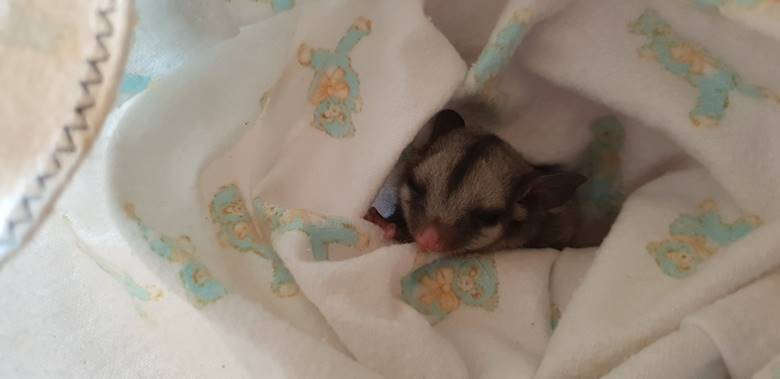
Fires and Wildlife
Wednesday, September 11, 2019
Photo credit: WIRES Northern Rivers
With such terrible fires sweeping across NSW and Queensland, WIRES are very aware of the tragic toll on wildlife. In the event of a major fire, the unfortunate reality is that the majority of wildlife in the immediate area of the fire, those which are unable to escape, generally perish.
Where fires are less intense, however, there is likely to be some animals which are burnt and need immediate critical care. Unfortunately we are not often allowed in to fire areas for some time for safety reasons. However, our wonderful fire fighters do look out for injured wildlife and do liaise with WIRES if required.
Often it is not till much later, after the fires have passed, that wildlife come into care with WIRES. Injured wildlife can be found months after the fires and may move in to populated areas seeking food, water or shelter. Animals might not initially seem injured but may have burns to their feet or tails or may be experiencing smoke inhalation, dehydration or starvation.
This Sugar Glider, fondly named Little Cinders, was found after the Tabulam fires earlier this year. She was found alone inside a hollow tree that collapsed after being burnt out. Little Cinders smelt of smoke but was otherwise in good health. Her family had, however, fled, so she was brought into care with WIRES. Cinders went on to be successfully released.It is VERY important that any wildlife that is found following a fire is reported to a wildlife group or taken to a vet. Animals will be in need of specialist attention and trained and licensed wildlife carers are best to provide this assistance. Please do not attempt to care for native animals yourself.
There are many ways that people can assist wildlife in distress:
- If you are living in or near Bushfire affected areas area you can help affected wildlife by leaving water bowls out for wildlife in your garden.
- Don't enter fire affected areas to search for wildlife - please leave this to trained personnel
- If you do find injured wildlife, if it is safe to do so, please wrap the animal in a towel and place in a secure box. The call your local wildlife group (see below) or take the animal to your nearest vet
- Don't attempt to handle dangerous animals such as koalas, adult kangaroos and wallabies, snakes or bats - always call for help.
- After the fires, continue to make water available. If wildlife in your area are short of food contact WIRES for advice and assistance.
For more information read WIRES Bushfire Factsheet.
WIRES Northern Rivers covers the area of the Drake/Ewingar fires – easterly from Drake. Please phone (02) 6628 1898 for wildlife assistance. For Clarence Valley and other regions in NSW please call WIRES NSW Rescue Line on 1300 094 737.
WIRES relies heavily on the generosity of caring people for support. All gifts $2 and over are tax deductible.
All branches need help to feed the native animals in care, please donate now to WIRES Wildlife Food Fund.
Recent Posts
Statement from WIRES regarding recent animal cruelty case
Walk on the Wild Side this April
WIRES Giving Day raises funds to feed the influx of Spring and Summer rescues
WIRES launches Emergency Response to assist massive numbers of LPS affected Rainbow Lorikeets
Platypus & Plains-wanderer protection
Third Round of WIRES National Grants Opens in July
WIRES Northern Rivers & Clarence Valley welcome new Emergency Responder and Wildlife Ambulance
Birds exposed to Fenthion released back to the wild
Contact media@wires.org.au for enquiries or call 0416 272 153.
For the latest updates on bushfire recovery projects and emergency response
Read WIRES Emergency Recovery Plan and WIRES National Emergency Response Plan
